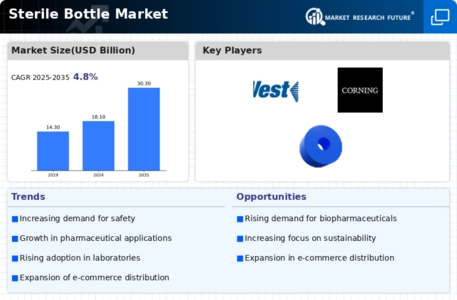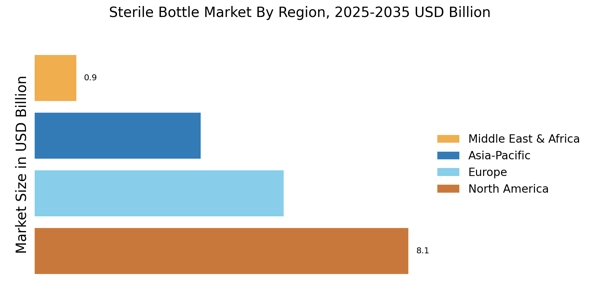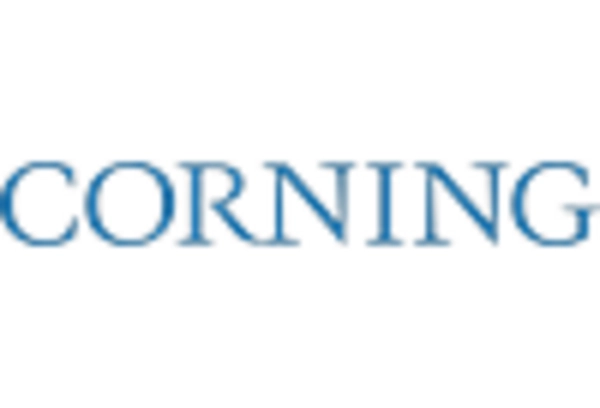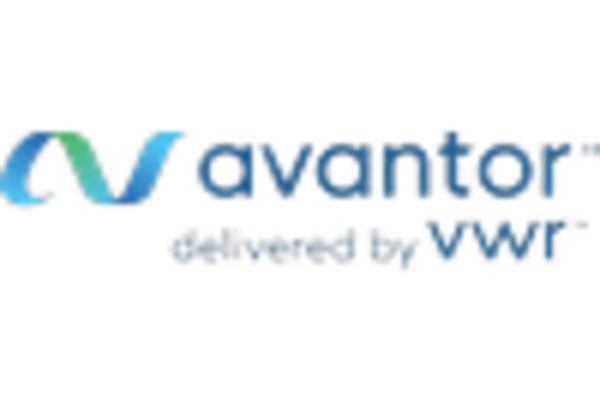Growing Healthcare Sector
The expansion of the healthcare sector appears to be a primary driver for the Sterile Bottle Market. As healthcare facilities proliferate, the demand for sterile products, including bottles, is likely to increase. According to recent data, the healthcare sector is projected to grow at a compound annual growth rate of approximately 7.5% over the next five years. This growth is attributed to an aging population and rising incidences of chronic diseases, which necessitate the use of sterile containers for medication and sample storage. Consequently, the Sterile Bottle Market is expected to benefit from this trend, as healthcare providers seek reliable and safe packaging solutions to ensure patient safety and product integrity.
Increased Regulatory Standards
The Sterile Bottle Market is also influenced by the rising regulatory standards imposed by health authorities. Stringent regulations regarding product safety and sterility are compelling manufacturers to ensure compliance in their production processes. Regulatory bodies are increasingly focusing on the quality of packaging materials, which directly impacts the Sterile Bottle Market. As a result, companies are investing in quality assurance measures and certifications to meet these standards. This trend not only enhances consumer trust but also drives the demand for sterile bottles that adhere to the latest regulatory requirements, thereby fostering growth in the market.
Rising Demand for Biopharmaceuticals
The biopharmaceutical sector is experiencing notable growth, which may significantly impact the Sterile Bottle Market. With the increasing prevalence of diseases and the subsequent rise in biopharmaceutical research and development, the need for sterile bottles to store and transport these sensitive products is becoming more pronounced. Market data indicates that the biopharmaceutical market is anticipated to reach USD 500 billion by 2026, reflecting a robust demand for sterile packaging solutions. This trend suggests that manufacturers of sterile bottles must adapt to the specific requirements of biopharmaceuticals, including compatibility and sterility assurance, thereby driving innovation within the Sterile Bottle Market.
Surge in E-commerce and Home Healthcare
The surge in e-commerce and home healthcare services is emerging as a significant driver for the Sterile Bottle Market. With the increasing preference for online shopping and the rise of home-based medical services, the demand for sterile packaging solutions is likely to escalate. E-commerce platforms require reliable and safe packaging to ensure product integrity during transit, particularly for healthcare products. Market analysis suggests that the e-commerce sector is expected to grow by over 20% annually, which could lead to a corresponding increase in the demand for sterile bottles. This trend indicates that the Sterile Bottle Market must adapt to the evolving landscape of distribution and consumer preferences.
Technological Innovations in Manufacturing
Technological advancements in manufacturing processes are likely to play a crucial role in shaping the Sterile Bottle Market. Innovations such as automated production lines and advanced sterilization techniques are enhancing the efficiency and quality of sterile bottle production. For instance, the introduction of blow-fill-seal technology has streamlined the manufacturing process, reducing contamination risks and improving product integrity. As a result, manufacturers can meet the increasing demand for high-quality sterile bottles while maintaining cost-effectiveness. This trend indicates that the Sterile Bottle Market is poised for growth as companies invest in modern technologies to enhance their production capabilities.


















Leave a Comment